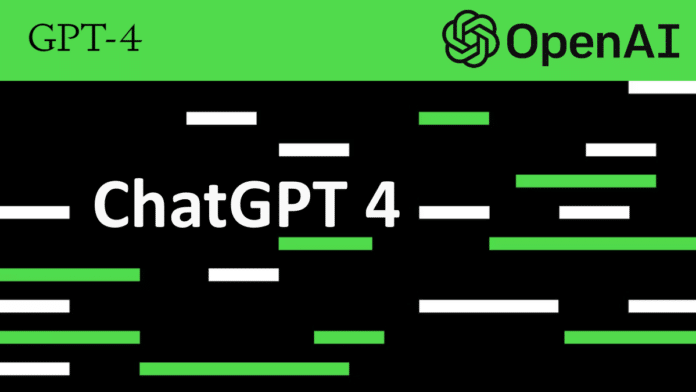Microsoft-backed OpenAI on Tuesday released GPT-4 – the latest version of the popular artificial intelligence (AI) chatbot ChatGPT.
The company claims that GPT-4, which stands for Generative Pretrained Transformer 4, is the latest milestone in its effort in scaling up deep learning, adding that the AI technology “exhibits human-level performance” on some professional and academic tasks.
GPT-4 is a large multimodal model, which can process not just text, but images, video, or audio. According to the company, the model is “more creative and collaborative than ever before” and “can solve difficult problems with greater accuracy” than its earlier versions.
“We’ve spent 6 months iteratively aligning GPT-4 using lessons from our adversarial testing program as well as ChatGPT, resulting in our best-ever results on factuality, steerability, and refusing to go outside of guardrails,” the company said in a research blog post on Tuesday.
GPT-4, which is an improvement over its predecessor, GPT-3.5 (the large language model that powers ChatGPT), can accept a prompt of text and images, allowing users to ask questions about pictures. It is more advanced compared to GPT 3.5, as it can handle more complex queries.
Further, the new version can write captions and descriptions, as well as provide recipe suggestions from photos of ingredients. It can also solve difficult problems and process up to 25,000 words, which is about eight times as many as ChatGPT.
“In a casual conversation, the distinction between GPT-3.5 and GPT-4 can be subtle. The difference comes out when the complexity of the task reaches a sufficient threshold — GPT-4 is more reliable, creative, and able to handle much more nuanced instructions than GPT-3.5,” OpenAI wrote in the blog post.
To understand the difference between GPT-3.5 and GPT-4, OpenAI tested these models on a variety of benchmarks, including simulating exams that were originally designed for humans.
GPT-4 outperforms existing large language models (LLMs), including most state-of-the-art (SOTA) models which may include benchmark-specific construction or additional training methods.
“In the 24 of 26 languages tested, GPT-4 outperforms the English-language performance of GPT-3.5 and other LLMs (Chinchilla, PaLM), including for low-resource languages such as Latvian, Welsh, and Swahili,” it added.
Despite its capabilities, GPT-4 has similar limitations as earlier GPT models. The company has acknowledged GPT-4’s limitations such as “social biases”, hallucinations, and adversarial prompts.”
“We look forward to GPT-4 becoming a valuable tool in improving people’s lives by powering many applications,” OpenAI wrote. “There’s still a lot of work to do, and we look forward to improving this model through the collective efforts of the community building on top of, exploring, and contributing to the model.”
While still a real issue, GPT-4 significantly reduces hallucinations relative to previous models. GPT-4 is likely to score 40% higher factual responses than GPT-3.5.
GPT-4’s text input capability will be available to ChatGPT Plus subscribers (with a usage cap) who pay a $20 monthly subscription for premium access to the service on chat.openai.com, and developers can sign up for the GPT-4 API’s waitlist.
OpenAI says it has already partnered with a number of companies to integrate GPT-4 into their products, including language learning company Duolingo Inc., electronics payments company Stripe, and Khan Academy.
OpenAI also announced new partnerships with language learning app Duolingo and Be My Eyes, an application for the visually impaired, to create AI Chatbots which can assist their users using natural language.
However, like its predecessors, OpenAI has warned that GPT-4 is still not fully reliable and may “hallucinate” – a phenomenon where AI invents facts or makes reasoning errors.
GPT-4 is available today to OpenAI’s paying users via ChatGPT Plus (with a usage cap), and developers can sign up on a waitlist to access the API. ChatGPT Plus subscribers will get GPT-4 access on chat.openai.com with a usage cap, while developers can sign up for the GPT-4 API’s waitlist.

